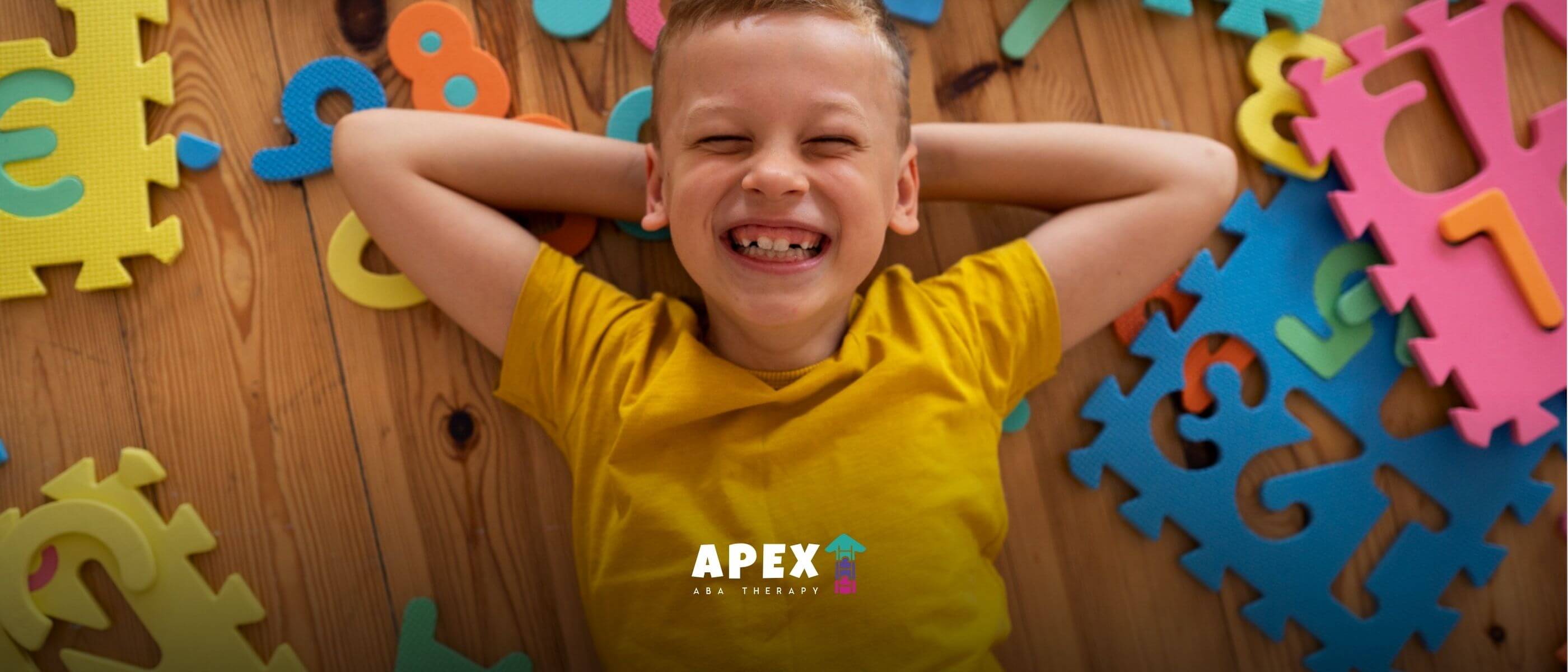IEP Goals for Autism: Ultimate Guide
Unlock the potential: Constructing meaningful IEP goals for autism to support your child's growth and development. Discover strategies and examples!

IEP Goals for Autism: Ultimate Guide
Understanding IEP Goals for Autism
In the realm of special education, Individualized Education Programs (IEPs) are essential for children with autism. IEPs are legal documents that outline the educational goals and services specifically tailored for children with autism, as mandated by the Individuals with Disabilities Education Act (IDEA). These goals are designed to provide a roadmap for the child's educational journey, ensuring that their unique needs are met.

An Introduction to IEPs for Autism
IEPs are comprehensive plans that address various aspects of a child's development. They are developed collaboratively by an IEP team, which typically includes parents, teachers, special education professionals, and other relevant individuals. The purpose of an IEP is to establish appropriate goals and identify the necessary services and accommodations to support the child's progress.
For children with autism, IEPs are particularly crucial as they help address the specific challenges and strengths associated with the condition. The goals outlined in an IEP for autism aim to promote growth and development in key areas such as communication, social skills, behavior, and academic skills. By targeting these areas, IEPs provide a framework for educators and professionals to support the child's learning and overall well-being.
Importance of SMART Goals
When developing IEP goals for children with autism, it is essential to ensure that they are specific, measurable, achievable, relevant, and time-bound (SMART). SMART goals provide clarity and direction, making it easier to track progress and determine the effectiveness of interventions.
Specific goals clearly define the desired outcome and focus on a particular area of development. Measurable goals allow for objective evaluation of progress by using quantifiable criteria or data. Achievable goals are realistic and attainable for the child, taking into account their current abilities and resources.
Relevant goals are aligned with the child's individual needs and address the specific challenges they face. Time-bound goals have a clear timeline or deadline, ensuring that progress is monitored regularly and interventions are adjusted as necessary.
By setting SMART goals within an IEP, parents and educators can work collaboratively to provide targeted support and interventions for the child with autism. These goals serve as a guide for tracking progress, evaluating the effectiveness of interventions, and making informed decisions about the child's educational journey. It is important to remember that IEP goals should be regularly reviewed and updated as the child progresses and develops new skills.
Key Areas of IEP Goals for Autism
Individualized Education Program (IEP) goals for students with autism should encompass a range of areas to support their overall development and success. By addressing these essential areas, students with autism can receive targeted support and interventions to facilitate their learning, development, and overall well-being. The key areas of IEP goals for autism include communication goals, social skills goals, academic goals, and behavior goals.
Communication Goals
Developing communication skills is a crucial aspect of IEP goals for students with autism. Communication goals may include improving expression, understanding, and meaningful conversations. These goals aim to enhance the student's ability to communicate effectively and navigate different social contexts. It may involve objectives such as expanding vocabulary, using appropriate gestures and eye contact, and engaging in reciprocal conversations.
Social Skills Goals
Enhancing social skills and interactions is another essential area of focus in IEP goals for students with autism. Social skills goals aim to improve appropriate behaviors, social navigation, and relationship-building. These goals may address areas such as understanding social cues, initiating and maintaining conversations, and developing friendships. By targeting social skills, students can enhance their ability to interact with peers and navigate social situations more effectively.
Academic Goals
Improving academic skills is a crucial component of IEP goals for students with autism. Academic goals may focus on areas such as reading, writing, math, and problem-solving. These goals aim to develop the student's abilities in these academic domains.
Examples of academic goals may include improving reading comprehension, writing complete sentences, solving multi-step math problems, or using study strategies. By addressing academic goals, students can work towards achieving grade-level expectations and academic success.
Behavior Goals
Behavior goals for students with autism focus on reducing challenging behaviors and promoting positive behaviors. These goals aim to address issues such as self-regulation, following rules and routines, managing transitions, and coping with sensory sensitivities.
Behavior goals should be measurable and include strategies for behavior support and intervention. By setting behavior goals, students can work towards developing appropriate behaviors and emotional regulation.
By addressing these key areas in IEP goals for students with autism, educators and parents can provide the necessary support and interventions to facilitate the student's overall development and success.
It's important to ensure that the goals are individualized, measurable, and aligned with the student's current abilities and grade-level expectations. Regular review and evaluation of these goals will help track progress and make any necessary adjustments to support the student's growth.
Developing Effective IEP Goals for Autism
When it comes to developing Individualized Education Program (IEP) goals for children with autism, certain key considerations are vital to ensure that the goals are meaningful and effective in addressing their unique needs. In this section, we will explore the importance of collaborating with the IEP team, setting individualized and measurable goals, and the need for regular review and evaluation.
Collaborating with the IEP Team
Collaboration with the IEP team is essential in creating effective goals for children with autism. The team typically includes parents, educators, and other professionals who work together to develop and review the goals and objectives for the child. By leveraging the expertise and insights of each team member, a comprehensive and well-rounded plan can be created to meet the child's educational needs.
When collaborating with the IEP team, open communication is key. It is important for parents to share their insights and observations about their child's strengths, challenges, and unique abilities. Educators and professionals can provide valuable input based on their experience and expertise. By working together, the team can create goals that are tailored to the specific needs of the child.
Individualized and Measurable Goals
For IEP goals to be effective, they must be individualized and measurable. Each child with autism has unique strengths, challenges, and learning styles. The goals should address these individual needs and be tailored to the child's abilities and interests.
To ensure that goals are measurable, they should be specific and include clear criteria for success. This allows for objective evaluation and progress monitoring. For example, instead of setting a vague goal like "improve social skills," a more measurable goal could be "initiate and maintain a conversation with a peer for at least five turns during structured activities." This provides a clear target for the child's progress and allows for meaningful evaluation.
By setting individualized and measurable goals, children with autism can work towards specific targets that are meaningful to their growth and development.
Regular Review and Evaluation
Once IEP goals have been set for a child with autism, regular review and evaluation are essential to ensure their ongoing effectiveness. Progress monitoring and data collection play a crucial role in determining whether the goals are helping the child make meaningful progress.
Regular evaluation allows the IEP team to assess the child's progress, identify areas of improvement, and make any necessary adjustments to the goals. This ensures that the goals remain relevant, challenging, and aligned with the child's changing needs and abilities.
By regularly reviewing and evaluating the IEP goals, the child's educational journey can be continuously supported, and any required modifications can be made to ensure their success.
Developing effective IEP goals for children with autism requires collaboration with the IEP team, setting individualized and measurable goals, and regular review and evaluation. By following these important steps, children with autism can receive the support and accommodations they need to thrive in their educational environment.
Strategies for Implementing IEP Goals
Implementing Individualized Education Program (IEP) goals for students with autism requires thoughtful strategies to ensure the goals are effectively met. Here are three key strategies for successfully implementing IEP goals: individualized instruction and accommodations, data collection and progress monitoring, and collaboration and communication with the IEP team.
Individualized Instruction and Accommodations
To support students with autism in achieving their IEP goals, individualized instruction and accommodations are essential. This involves tailoring teaching methods, materials, and environments to meet the unique needs of each student. By considering their strengths, challenges, and learning styles, educators can create a supportive and inclusive learning environment.
Accommodations may include providing visual aids, using assistive technology, offering additional time for assignments or tests, and modifying assignments to match the student's abilities. These adaptations help ensure that students can access the curriculum and actively participate in their education.
Data Collection and Progress Monitoring
Collecting data and monitoring progress are crucial components of effective IEP goal implementation. Through systematic data collection, educators can track a student's performance and determine if the interventions and strategies implemented are yielding the desired outcomes.
Data collection methods may include observing behaviors, conducting assessments, and maintaining records of student work. This data provides valuable insights into a student's progress, enabling educators to make informed decisions about adjustments to instruction and interventions.
Regularly reviewing and analyzing the collected data allows educators to measure progress, identify areas of improvement, and make necessary modifications to the instructional approach. This iterative process helps ensure that IEP goals remain meaningful and effective.
Collaboration and Communication
Collaboration and communication are paramount when implementing IEP goals for students with autism. The success of the IEP relies on the collective effort and expertise of the IEP team, which typically includes parents, teachers, therapists, and other professionals.
Open and ongoing communication among team members fosters a collaborative approach to addressing the unique needs of the student. Regular meetings allow for sharing updates, discussing progress, and adjusting strategies as needed. Collaboration also ensures consistency in supporting the student across different environments, such as school and home.
Parents play a vital role in the IEP process, as they possess valuable insights into their child's strengths, challenges, and preferences. Their active involvement and open communication with the IEP team contribute to the development and successful implementation of meaningful goals.
By implementing individualized instruction and accommodations, collecting data for progress monitoring, and fostering collaboration and communication with the IEP team, students with autism can receive the necessary support to achieve their educational goals. These strategies create an inclusive and supportive learning environment, promoting the overall success and well-being of students with autism.
Examples of IEP Goals for Autism
When developing Individualized Education Program (IEP) goals for students with autism, it's important to consider their unique needs and abilities. IEP goals should be specific, measurable, achievable, relevant, and time-bound (SMART goals) to ensure meaningful progress. Below are examples of IEP goals for autism, categorized into communication, social skills, academic, and behavior goals.
Communication Goals for Autism
- Objective: The student will improve expressive language skills by using complete sentences to express needs and desires in different settings.
- Objective: The student will enhance receptive language skills by following multi-step directions with visual supports in the classroom.
- Objective: The student will develop nonverbal communication skills by using appropriate body language and gestures during social interactions.
- Objective: The student will improve social communication skills by initiating and maintaining conversations with peers, including turn-taking and topic maintenance.
(Source: NASET)
Social Skills Goals for Autism
- Objective: The student will improve social interaction skills by making eye contact during conversations and maintaining appropriate personal space.
- Objective: The student will develop perspective-taking skills by understanding and interpreting social cues, such as facial expressions and body language.
- Objective: The student will enhance social skills by participating in group activities and demonstrating cooperation and teamwork.
- Objective: The student will improve conflict resolution skills by using appropriate strategies to address and resolve conflicts with peers.
(Source: NASET)
Academic Goals for Autism
- Objective: The student will improve reading comprehension skills by answering literal and inferential questions based on grade-level texts.
- Objective: The student will enhance writing skills by independently composing paragraphs with a clear topic sentence, supporting details, and a concluding sentence.
- Objective: The student will develop math problem-solving skills by solving multi-step word problems that involve addition, subtraction, multiplication, and division.
- Objective: The student will improve organizational skills by utilizing strategies such as creating and following a daily schedule or using a planner.
(Source: NASET)
Behavior Goals for Autism
- Objective: The student will improve self-regulation skills by implementing calming strategies (e.g., deep breathing, taking a break) when feeling overwhelmed or anxious.
- Objective: The student will enhance following rules and routines by consistently adhering to classroom expectations and transitioning smoothly between activities.
- Objective: The student will develop sensory coping skills by using appropriate strategies (e.g., noise-canceling headphones, sensory breaks) to manage sensory sensitivities.
- Objective: The student will improve emotional regulation skills by identifying and utilizing appropriate strategies (e.g., counting to 10, seeking support from a trusted adult) to manage emotions.
(Source: NASET)
By addressing these essential areas in IEP goals, students with autism can receive the targeted support and interventions they need to facilitate their learning, development, and overall well-bein. These examples provide a starting point for creating individualized goals that align with the unique strengths and challenges of each student with autism.
References
[1]: https://www.webmd.com/brain/ieps-for-autism
[2]: https://everydayspeech.com/blog-posts/general/iep
Frequently Asked Questions
What is the purpose of an IEP for a child with autism?
An Individualized Education Program (IEP) helps outline specific educational goals, accommodations, and services for a student with autism to ensure they receive tailored support to meet their unique needs. It serves as a blueprint for the child’s educational journey.
How can IEP goals support a child’s social development?
IEP goals for social development might focus on improving communication with peers, understanding social cues, and engaging in cooperative play or group activities. Goals may also address recognizing emotions and managing conflicts, which are essential for long-term social success.
Can IEP goals be modified throughout the year?
Yes, IEP goals are flexible. If a student makes significant progress or faces new challenges, the IEP team can meet to revise and adjust the goals and strategies to reflect their current needs.
How can IEP goals help improve a child’s communication skills?
For children with autism, IEP goals may focus on developing functional communication, such as using speech, augmentative communication devices, sign language, or visual supports to enhance their ability to express needs, ask questions, and engage with others.
What role do parents play in developing IEP goals for their child?
Parents are key members of the IEP team and provide critical insight into their child’s strengths, challenges, and home environment. Their involvement ensures that goals reflect the child’s real-world experiences and that the school environment is set up for success.

How to Teach Kitchen Safety to Autistic Children: A Parent’s Guide
Teaching kitchen safety to autistic children is easier with the right strategies. Learn step-by-step tips to create a safe environment and build essential skills.

How to Manage Attention-Seeking Behaviors in a Positive, Supportive Wayr
Learn how to reduce attention-seeking behaviors in children using positive reinforcement, clear boundaries, and communication skills. Find helpful strategies here.

Can Play Therapy and ABA Therapy Work Together to Help Your Child?
Combining play therapy with ABA therapy offers a powerful way to enhance your child’s growth. Find out how these therapies work together for lasting benefits.



